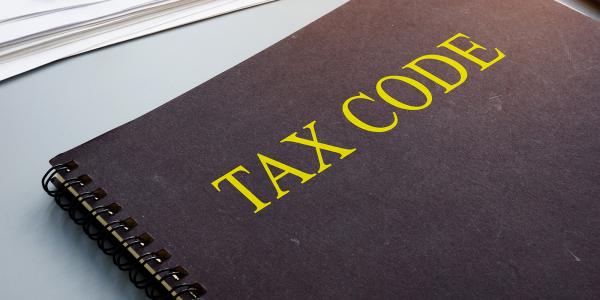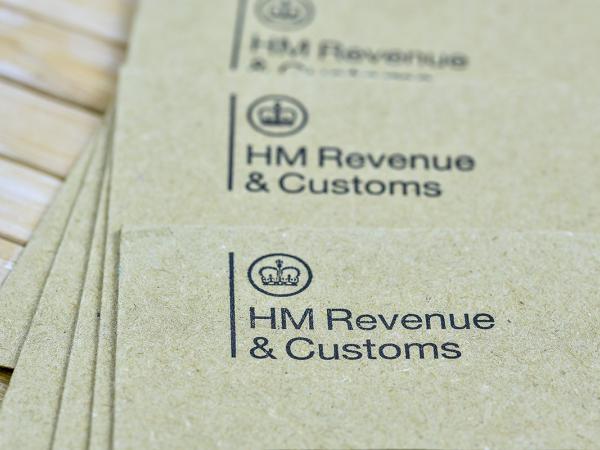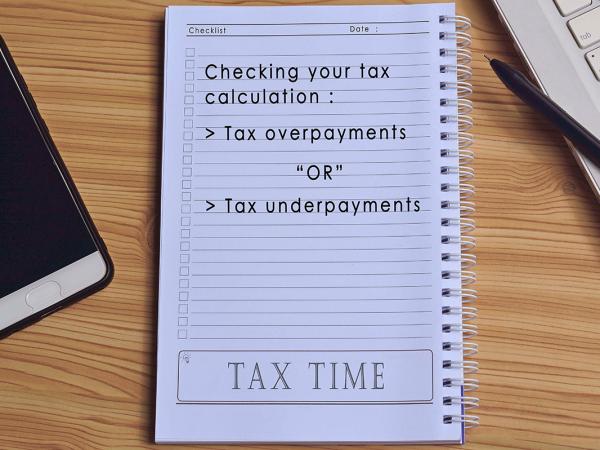PAYE codes
The Pay As You Earn (PAYE) system collects income tax at source from your employment and pension income. If you receive income under the PAYE system, you will have a PAYE code (also called a tax code). HMRC issue PAYE codes to employers and pension providers to tell them how much income tax to deduct from your income.

Content on this page:
The makeup of a tax code
Tax-free amount
Most people who pay tax in the UK are entitled to the personal allowance. This is the starting point for most tax codes. If you have no other income, you can have employment earnings or pension income up to the amount of your personal allowance without having to pay any tax.
There may be other amounts to add to your personal allowance to increase the amount you can earn before paying tax – your tax-free amount – and therefore reduce the tax you have to pay. For example, you may be entitled to other allowances, like the blind person’s allowance.
You may also be entitled to claim tax relief for job expenses, such as using your own car for business or professional subscriptions. By including tax relief for job expenses in your tax code you will generally pay less tax on your employment income – we call this getting tax relief ‘through your code’.
Deductions
There may be some items in your tax code that reduce your tax-free amount and so increase the amount of tax that you pay. For example:
- if you receive a state pension – the state pension is taxable but the Department for Work and Pensions (DWP), who pay it, do not operate the PAYE system. The tax due is therefore collected by reducing your tax-free amount by the amount of state pension you are entitled to for the year;
- if you are employed and your employer provides you with benefits in kind, such as private medical insurance or a company car, the value of those benefits may be taken off your tax-free amount if your employer is not payrolling them;
- if you owe tax for an earlier period, your tax-free amount may be reduced so that you pay it back. For more on the adjustment that is made to collect unpaid taxes see our page PAYE codes.
- if you receive income that it is not possible to tax before you receive it, your tax-free amount may be reduced by an estimate of that income. For example, if you rent out a property and are not otherwise required to submit a self assessment tax return, HMRC might reduce your tax-free amount by an estimate of your rental income. Similarly, if you receive savings interest on which tax is due, HMRC might reduce your tax-free amount by an amount of estimated interest.
There is more information on what happens when the deductions exceed your tax-free amount on our page Special PAYE codes.
Understanding your tax code
Your tax-free allowances, reduced or increased as necessary, are turned into a tax code.
Numbers in tax codes
HMRC drop the last digit of the tax-free amount and then add on a letter. We explain what each letter means below. For example, in 2024/25, a taxpayer whose tax-free amount is just the personal allowance of £12,570 will have a tax code of 1257L.
If you are an employee, this code will tell your employer that you are entitled to £12,570 tax-free pay per year, £1,048 tax-free pay per month or £242 per week.
Note that if you are a Scottish taxpayer, your tax code will start with the letter ‘S’, such as S1257L; if you are a Welsh taxpayer, your tax code will start with the letter ‘C’, such as C1257L.
Letters in tax codes
The letters used in tax codes often will not mean much to you. Most are there for HMRC or your employer or pension provider to refer to.
Personal allowances and tax rates may change. Rather than issue new tax codes to millions of people, HMRC tell employers to simply increase by a certain amount all codes ending in, for example, the letter L. For example, in 2021/22 when the personal allowance increased from £12,500 to £12,570, HMRC would have sent a bulletin to all employers telling them to increase the numbers for anybody on an L code by 7, from 1250L to 1257L.
You may come across the following letters in tax codes:
| Code meaning | |
| C | Since 6 April 2019, you should find this at the start of your tax code if you are a Welsh taxpayer, for example C1257L. This allows an allocation of the total tax paid to be made to the Welsh government |
| L | You might find this at the end of your tax code if you are entitled to the basic personal allowance – for example, 1257L |
| M | You might find this at the end of your tax code if your spouse or civil partner has transferred some of their personal allowance to you using the marriage allowance. Although this is not strictly an extra allowance in your hands, this adjustment to your code number should produce a similar effect |
| N | You might find this at the end of your tax code if you have transferred some of your personal allowance to your spouse or civil partner using the marriage allowance |
| S | Since 6 April 2016 you should find this at the start of your tax code if you are a Scottish taxpayer. This allows an allocation of the total tax paid to be made to the Scottish government |
| T |
You might find this at the end of your tax code if there are items in your tax code that HMRC need to review each year, for example, if you split your personal allowance because you have two jobs. Note: If your tax-free amount is reduced to nil you will be given a code 0T. Basic rate tax (20% in 2024/25) will be deducted from your pay up to a certain level, over which the higher or additional rates of tax will be deducted (40% and 45% respectively in 2024/25). See example below. Note: if you are a Scottish taxpayer the tax rates and bands that apply to you are different, as are the tax codes. See our page on Special PAYE codes. |
Changes of circumstances
If your circumstances change, your tax code may change. HMRC can change your tax code at the start of each tax year, but also part way through the tax year, see the information on dynamic coding below.
Common events that can give rise to changes include:
- you start a job, start receiving a pension or start receiving income from an additional job or pension
- you change jobs
- your employer submits your P11D benefits information for the previous year to HMRC
- the amount of something that has already been included in your tax code (for example untaxed income) has changed
- you request tax relief through your tax code for employment expenses
- HMRC start ‘coding out’ underpayments or other debts that they think you have
- you were on an incorrect tax code earlier in the tax year
Dynamic coding
HMRC operate dynamic coding practices. To do this, they make use of various sources of data to work out what employees and pensioners should be paying in real-time. This allows them to then adjust their PAYE codes as necessary, including part way through the tax year, to take account of the adjusted anticipated tax liability.
If HMRC change your tax code part way through the year, they will tell your employer or pension provider the new code number and send you a new PAYE coding notice. If you are not sure what is happening, contact HMRC to ask them to explain.
It is very important to keep HMRC up to date on changes that may impact your tax position, so that they can adjust your tax code, otherwise you may not pay the right amount of tax.
Underpayments
If HMRC become aware of an underpayment arising during a tax year, they may adjust your tax code part way through the tax year to collect some or all of the extra tax due. They do this rather than waiting to include the tax underpayment in your tax code for the following tax year.
The hope is that this may mean that no underpayment or a smaller underpayment of tax arises when HMRC reconcile your tax position after the end of the tax year.
Normally adjustments to collect an estimated underpayment for the current year will not be placed in your code number if it is issued after 5 January in the tax year; instead that underpayment is likely to be carried forward and collected in your tax code in a later year. See below for more information.
Overpayments
A change of tax code can mean that you can get an in-year refund paid via your employer’s payroll or your pension provider, if you have been paying too much tax. This can happen where you have requested reliefs, for example.
PAYE underpayments
PAYE does not always work as it should, and you may not pay the correct amount of tax. Sometimes, HMRC try and collect underpayments through your tax code. We explain more on the adjustment that is made to collect unpaid taxes on our page PAYE coding notices.
Where the underpayment relates to a tax year before the current tax year, you should already have been notified of the underpayment by HMRC, probably by the issue of a PAYE tax calculation (form P800). You should follow the guidance on our page PAYE underpayments.
Alternatively, if the underpayment that is included in your code number relates to the current tax year, you should read the explanation of the underpayment given on the coding notice and contact HMRC if you need a further explanation, or if you do not understand or do not agree with the amount.
If the inclusion of this estimated underpayment for the current tax year would cause you financial difficulty, you should contact HMRC as soon as possible and ask them to remove it from your code number. Remember that if you do this, you would still have to pay any underpayment – you are just delaying when this needs to be paid. Normally HMRC would include the underpayment in your tax code for the following year, but if this will cause you hardship you can ask for it to be collected over a longer period of time, normally a maximum of three years.
If you are in self assessment, you can sometimes pay your self assessment bill through your tax code. Usually the tax return must have been submitted by 30 December if you wish the liability to be collected via your tax code for the tax year starting the following April. Self assessment debts can also be included in code numbers, where appropriate.
More information
HMRC have online tools to help you check the tax you are paying in the current year and have paid in past tax years. These can be found on GOV.UK. To access some of these services you need to have a Personal Tax account.
For information on how to check your PAYE coding notice and examples of different types of PAYE code, see our page PAYE coding notices.
There is more information on the different letters you might come across in your PAYE code on GOV.UK.



